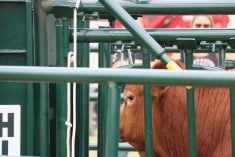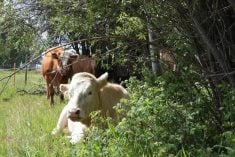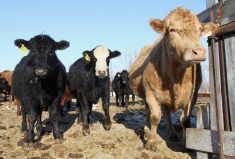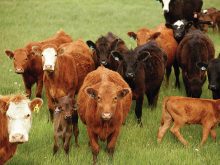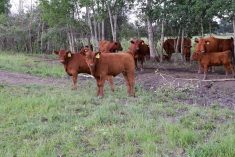There has been lots said about Johne’s disease over the years but a recent webinar by Dr. Cheryl Waldner (available at beefresearch.ca) gave me lots of food for thought.
Herds are getting bigger and as that happens, they are more confined. And since the bacterium that causes Johne’s can be spread in the manure, infection via the fecal-oral route may start to increase.
If a cow has Johne’s (pronounced ‘yo-knees’), there is about a 30 per cent chance she will pass it on to her calf. So if you find a clinical case in your herd, one must closely examine any offspring. We are now starting to see Johne’s in some bison herds as well. Wildlife such as deer and elk can get it also and could pass it to a herd.
Read Also
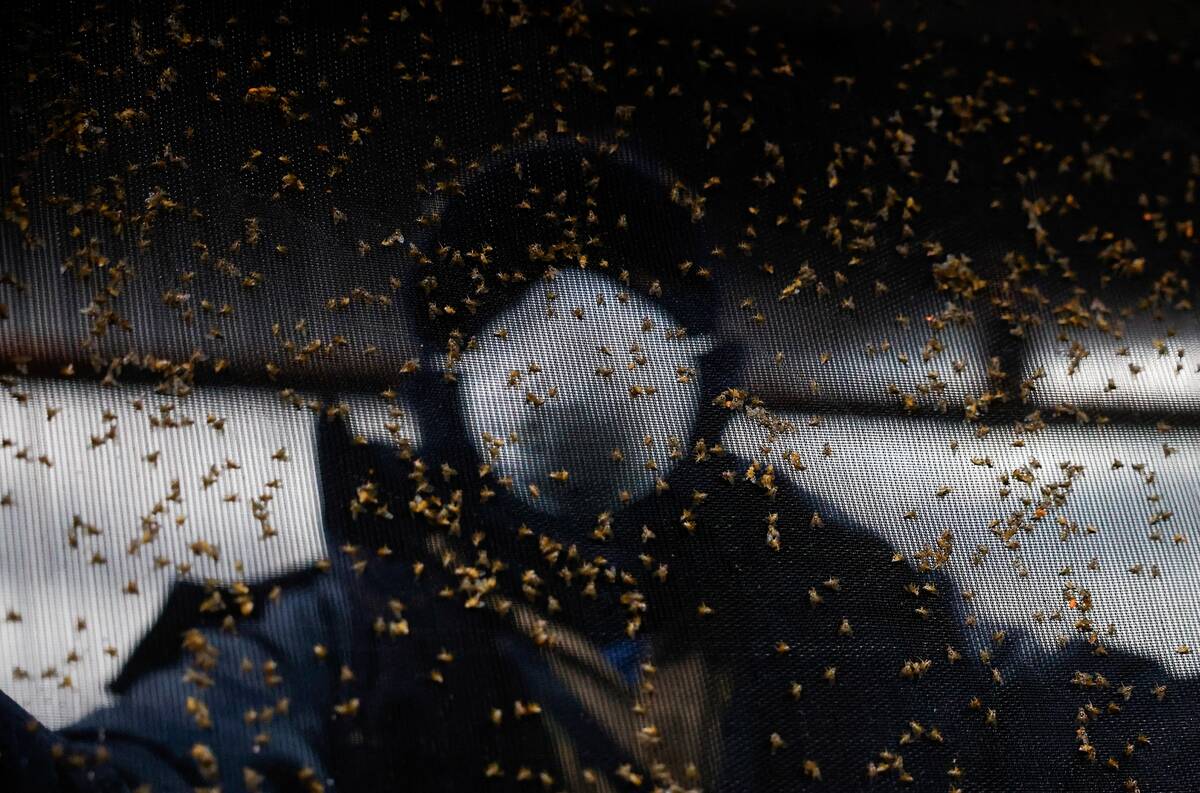
Canada too cold for New World screwworm
New World screwworm is closing in on the U.S. from Mexico, but the deadly livestock parasite isn’t likely to dig a surviving population in Canada, even if the fly species sneaks over the border.
If a case is diagnosed then this is where good records will help. The most specific test these days seems to be a fecal PCR test for specific chains of DNA unique to the bacteria that signal the cow or bull has the mycobacterium organism.
We can’t hide our head in the sand with this disease and we must, especially with purebred herds, follow the pedigree back. If the positive animal was purchased, one must then follow it back to that herd. Then — without citing blame — tell the other producer to keep an eye open for it and test some specific animals. Any cow with diarrhea and weight loss and yet with a good appetite is very suspect. Researchers are trying to fine-tune the testing so we can pick it up much earlier in the course of the disease.
It has been found that with good manure management (i.e. don’t spread manure on hay land), isolating known cases ASAP and shipping the positive adults for slaughter, you can start to dilute this disease out.
Cattle pretty much contract this disease in the first six months of age, so most transmission then occurs from calving to a bit after breeding season. Calves hang by their mothers and groups of calves hang together so their social behaviour and proximity to each other is where transmission occurs.
It has been found that good bedding and having creep areas for the calves where they are not always in close proximity to their mothers go a long ways to cutting transmission. The organism will last in the environment about a year and freeze/thaw cycles do tend to decrease the levels over time.
I have had a few cases where, as an example, a purebred bull was purchased by one producer and then used by a third producer and then diagnosed at five years of age. With the pedigree and record of movement, we can work our way back to the first breeder and help them to see if it warrants testing some key contact animals.
Transmission from bulls is reduced considerably because they are only with the herd for a short time and are introduced at the breeding season when most calves are already a couple of months old. The stress of the breeding season may have the disease come to light. This is the same with cows at calving where that stressful event may allow more clinical signs to develop.
If a cow is doing poorly (some diarrhea or weight loss), I would have it tested before shipping unless there’s another obvious cause. Talk to your veterinarian about this but you want to know for sure if it is Johne’s disease in case you want to treat other cohorts or offspring from that cow which may still be in the herd.
If several cases are found, then testing of the herd or a large cohort may be undertaken.
With the fecal PCR testing, keep in mind that a lab can pool five samples. If negative you are fine, if positive, test the five individually to find your culprit. I have lots of faith in the PCR fecal test and cull accordingly. There may be an isolation plan for valuable purebreds (to flush cows before shipping) but that decision will be between you and your veterinarian.
One must weigh the amount to be gained versus the ongoing biosecurity risk.
One can test new entries to the herd and most embryo transplant veterinarians are testing the recipient cows they use to ensure (at least at the time of acquisition) that they are negative. If either commercial or purebred producers are buying replacements, they are usually either calves or more likely bred heifers and these are a bit futile to test because the incubation period is two years or longer. One then must have a very good handle on the health status in regards to Johne’s of the herd they are coming from.
With Johne’s, clinical cases are usually easy to recognize and remove — but that may be just the tip of the iceberg.
Some recent work found a group of dairy cattle had a two per cent incidence in Western Canada. I would say it is more of a problem in dairy cattle than beef, but it really pays to be hypervigilant. It is only in the last few years have I seen incidence going back up. BSE testing has helped identify herds with issues that in the past would dispose of these animals without checking them out.
I have always said if over the last 20 years we didn’t need to devote so much of our efforts to BSE testing we could have been a lot further down the path of Johne’s annihilation. Testing has become more accurate and my one wish is that breed associations and other cattle groups could make funding available to assist with complete herd testing when it is necessary.
In the meantime we should all use our skills to diagnose, confirm and search out other potentials in the herd to really cut down the transmission rate.





